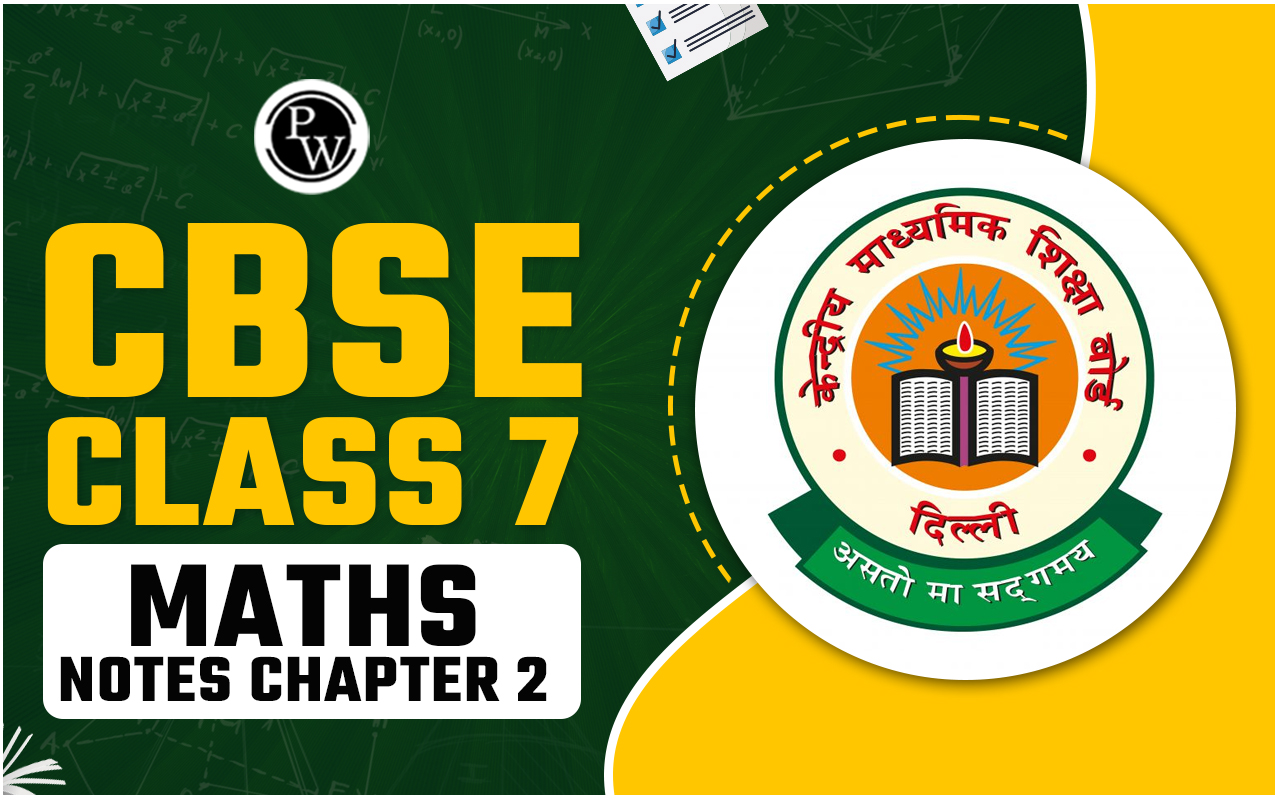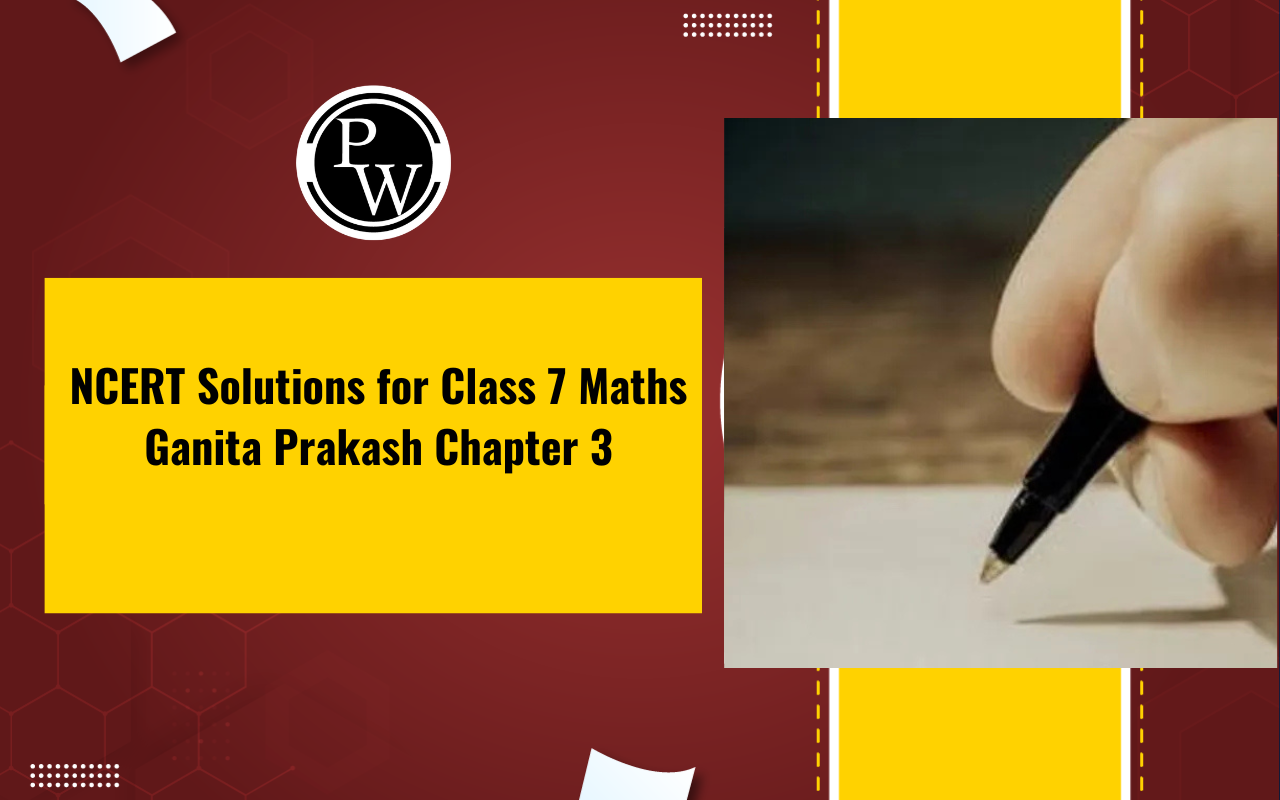

CBSE Class 7 Maths Notes Chapter 2
CBSE Class 7 Maths Notes Chapter 2: The PDF revision notes for CBSE Class 7 Maths Chapter 2 on Fractions and Decimals are currently accessible on this page. The concepts of fractions and decimals, along with their relationships, are introduced in this chapter.
Since fractions and decimals are two of the most basic mathematical concepts covered in this chapter, our specialists have developed these notes that address the key ideas and how they apply to sums. To prepare for their exams, students can view the notes PDF online or download it for free.CBSE Class 7 Maths Notes Chapter 2 Overview
Below we have provided CBSE Class 7 Maths Notes Chapter 2 for the students to help them ace their class 7 maths examination.- Meaning of Fractions
- Representation of Fractions
- Fractions on Number Line
- Multiplication of Fractions
- Fraction as an Operator ‘of’
- Division of Fractions
- Reciprocal of a Fraction
- Types of Fractions
- An Introduction to Decimals
- Multiplication of Decimals
- Division of Decimals
| CBSE Syllabus Class 7 | |
| CBSE Class 7 English Syllabus | CBSE Class 7 Math Syllabus |
| CBSE Class 7 Social Science Syllabus | CBSE Class 7 Science Syllabus |
CBSE Class 7 Maths Notes Chapter 2 PDF
Here is the link to download the CBSE Class 7 Maths Notes Chapter 2 Fractions and Decimals in PDF format. The major objective is to help students understand and resolve these problems. We have prepared the CBSE Class 7 Maths Notes Chapter 2 Fractions and Decimals and have solved the problems step-by-step with detailed explanations.CBSE Class 7 Maths Notes Chapter 2 PDF Download
CBSE Class 7 Maths Notes Chapter 2 Fractions and Decimals
We studied fractions, decimals, and addition and subtraction operations on them in the last session.The word fraction derives from the Latin word “Fractus” meaning broken . It represents a part of a whole , consisting of a number of equal parts out of a whole.
Representation of Fractions
A fraction is represented by 2 numbers on top of each other, separated by a line. The number on top is the numerator and the number below is the denominator . Example : 3 4 which basically means 3 parts out of 4 equal divisions.Fractions on the Number Line
In order to represent a fraction on a number line, we divide the line segment between two whole numbers into n equal parts , where n is the denominator. Example : To represent 1/5 or 3/5 , we divide the line between 0 and 1 in 5 equal parts. Then the numerator gives the number of divisions to mark.
Multiplication of Fractions
Multiplication of Fractions
Multiplication of a fraction by a whole number: Example 1: 7 ×(1/3) = 7/3 Example 2 : 5 ×(7/45) = 35/45 , Dividing numerator and denominator by 5, we get 7/9 Multiplication of a fraction by a fraction is basically product of numerators/product of denominators. Example 1: (3/5) × (12/13) = 36/65 Example 2 : Multiplication of mixed fractionsFraction as an Operator ‘Of’
The ‘of’ operator basically implies multiplication . Example: 1/6 o f 18 = (1/6) × 18 = 18/6 = 3 or, 1/2 o f 11 = (1/2) × 11 = 11/2Division of Fractions
Reciprocal of a Fraction
Reciprocal of any number n is written as 1 nReciprocal of a fraction is obtained by interchanging the numerator and denominator.
Example: Reciprocal of 2/5 is 5/2 Although zero divided by any number means zero itself, we cannot find reciprocals for them, as a number divided by 0 is undefined . Example: Reciprocal of 0/7 ≠ 7/0Division of Fractions
Division of a whole number by a fraction: we multiply the whole number with the reciprocal of the fraction.Example : 63 ÷( 7/5) = 63 × (5/7) = 9 × 5 = 45
Division of a fraction by a whole number : we multiply the fraction with the reciprocal of the whole number.Example : (8/11) ÷ 4 = (8/11) ×( 1/4) = 2/11
Division of a fraction by another fraction : We multiply the dividend with the reciprocal of the divisor.Example : (2/7) ÷ (5/21) = (2/7) × (21/5) = 6/5.
Related Links -
Decimals
Introduction to Decimal
Decimal numbers are used to represent numbers that are smaller than the unit 1 . Decimal number system is also known as base 10 system since each place value is denoted by a power of 10.
A decimal number refers to a number consisting of the following two parts: (i) Integral part (before the decimal point) (ii) Fractional Part (after the decimal point). These both are separated by a decimal separator(.) called the decimal point . A decimal number is written as follows: Example 564.8 or 23.97. The numbers to the left of the decimal point increase with the order of 10, while the numbers to the right of the point increase with the decrease order of 10. The above example 564.8 can be read as ‘five hundred and sixty-four and eight tenths’. ⇒ 5 × 100 + 6 × 10 + 4 × 1 + 8 ×(1/10) A fraction can be written as a decimal and vice-versa. Example 3/2 = 1.5 or 1.5 = 15/10 = 3/2.Multiplication of Decimals
Multiplication of decimal numbers with whole numbers:
Multiply them as whole numbers. The product will contain the same number of digits after the decimal point as that of the decimal number. E.g : 11.3 × 4 = 45.2Multiplication of decimals with powers of 10:
If a decimal is multiplied by a power of 10, then the decimal point shifts to the right by the number of zeros in its power. E.g : 45.678 × 10 = 456.78 (decimal point shifts by 1 place to the right) or, 45.678 × 1000 = 45678 (decimal point shifts by 3 places to the right)Multiplication of decimals with decimals:
Multiply the decimal numbers without decimal points and then give decimal point in the answer as many places same as the total number of places right to the decimal points in both numbers. E.g :
Division of Decimals
Dividing a decimal number by a whole number :
Example: 45.2/55Step 1 . Convert the Decimal number into Fraction: 45.25 = 4525/100
Step 2 . Divide the fraction by the whole number: ( 4525/100) ÷ 5 = ( 4525/100) × (1/5) = 9.05
Dividing a decimal number by a decimal number :
Example 1: 45.25/0.5Step 1. Convert both the decimal numbers into fractions: 45.25 = 4525/100 and 0.5 = 5/10
Step 2. Divide the fractions: (4525/100) ÷ (5/10) = (4525/100) × (10/5) = 90.5
Example 2:
Dividing a decimal number by powers of 10 :
If a decimal is divided by a power of 10, then the decimal point shifts to the left by the number of zeros present in the power of 10. Example: 98.765 ÷ 100 = 0.98765 Infinity When the denominator in a fraction is very very small (almost tending to 0), then the value of the fraction tends towards infinity . E.g: 999999/0.000001 = 999999000001 ≈ a very large number, which is considered to be ∞Types of Fractions
Mainly there are six types of fractions. All these types of fractions are discussed below:
1. Proper Fraction:
In this fraction, the numerator is always less than the denominator. It shows the part of a whole.
2. Improper Fraction:
In this fraction numerator is always more than the denominator and it shows the mixture of whole and a proper fraction.
3. Mixed Fraction:
In this type of fraction we write mixed form as it is the mixture of whole numbers and a fraction.
4. Like Fraction:
In this type, there are fractions with the same denominator.
5. Unlike Fraction:
In this fraction, there are fractions with different denominators.
6. Equivalent Fraction:
The fraction which is proportional to each other is termed as an equivalent fraction.
Features of CBSE Class 7 Maths Notes Chapter 3
Here are some revision notes for the Class 7 Maths students on the Fractions and Decimals chapter. These will help them to fully comprehend and rewrite the chapter. Let’s now examine the advantages of the revision notes.- We cover every significant subject from the perspective of the CBSE in our revision notes.
- You can spend an hour reviewing all the key points of a certain subject with these revision notes.
- These revision notes include multiple-choice questions in addition to FAQs, which will assist you in practicing an increasing number of questions. You become more proficient in that subject the more you practise it.
- We also offer you easily readable review notes for every chapter, which you can use to focus on whatever maths chapter you need to know since every topic has a distinct role in various test.
- Our top subject matter experts are available to help you write the best revision notes so you may perform to the best of your ability on the test.
- We offer notes with well-organized, simple diagrams, accurate captions, and content that will benefit you overall.
CBSE Class 7 Maths Notes Chapter 2 FAQs
What is the name of the chapter 2 of maths class 7?
What I learned in fractions and decimals Class 7?
What are the main points of fractions and decimals?











